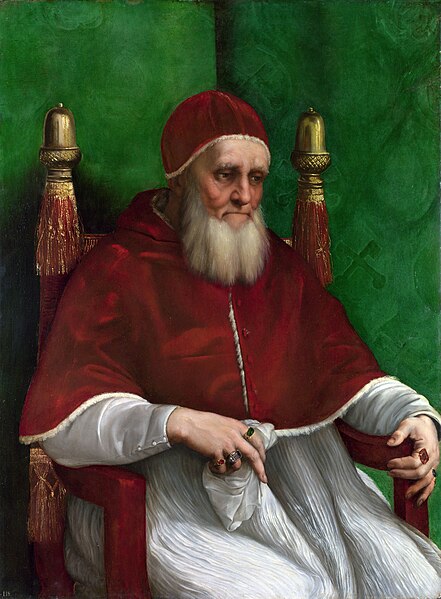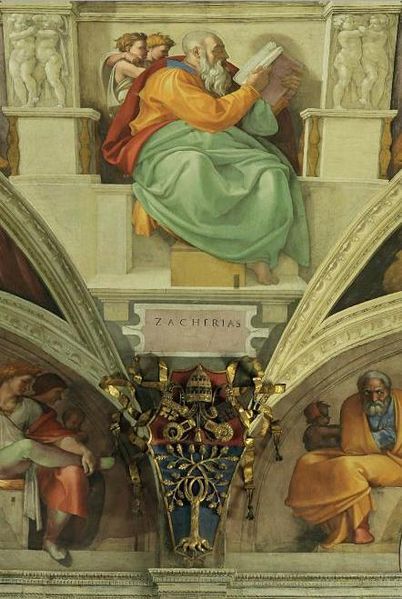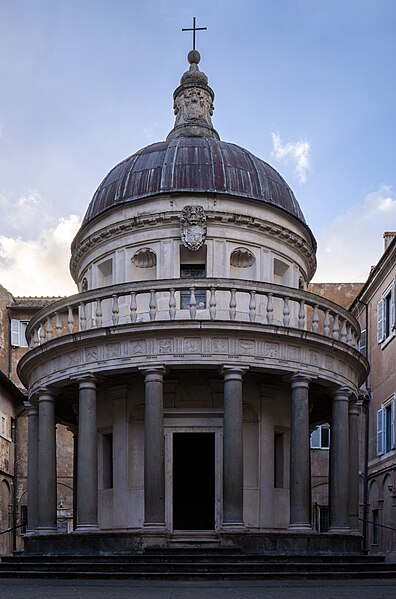Art patronage of Julius II
Pope Julius II, commissioned a series of highly influential art and architecture projects in the Vatican. The painting of the Sistine Chapel ceiling by Michelangelo and of various rooms by Raphael in the Apostolic Palace are considered among the masterworks that mark the High Renaissance in Rome. His decision to rebuild St Peter's led to the construction of the present basilica.
Raphael's, School of Athens (1509–1511), a fresco in the Raphael Rooms of the Apostolic Palace, Vatican
Portrait of Julius II by Raphael, 1511–12, National Gallery
On the wall above the main entrance door of the Sistine Chapel fresco of the Prophet Zechariah lower, with the face of Pope Julius II, le below the coat of the same pope. Michelangelo.
Giulliano della Rovere, as cardinal (left), with his uncle and patron Francesco della Rovere, Pope Sixtus IV (right)
In art history, the High Renaissance was a short period of the most exceptional artistic production in the Italian states, particularly Rome, capital of the Papal States, and in Florence, during the Italian Renaissance. Most art historians state that the High Renaissance started between 1490 and 1500, and ended in 1520 with the death of Raphael, although some say the High Renaissance ended about 1525, or in 1527 with the Sack of Rome by the mutinous army of Charles V, Holy Roman Emperor, or about 1530. The best-known exponents of painting, sculpture and architecture of the High Renaissance include Leonardo da Vinci, Michelangelo, Raphael, and Bramante. In the 21st century, the use of the term has been frequently criticized by some academic art historians for oversimplifying artistic developments, ignoring historical context, and focusing only on a few iconic works.
Raphael's frescos in the Raphael Rooms of the Apostolic Palace in the Vatican, also commissioned by Pope Julius II
The Last Supper, mural painting by Leonardo da Vinci
Bramante'sTempietto, designed 1502, San Pietro in Montorio, Rome
Leonardo da Vinci's Mona Lisa or La Gioconda (1503–05/07) in the Louvre








